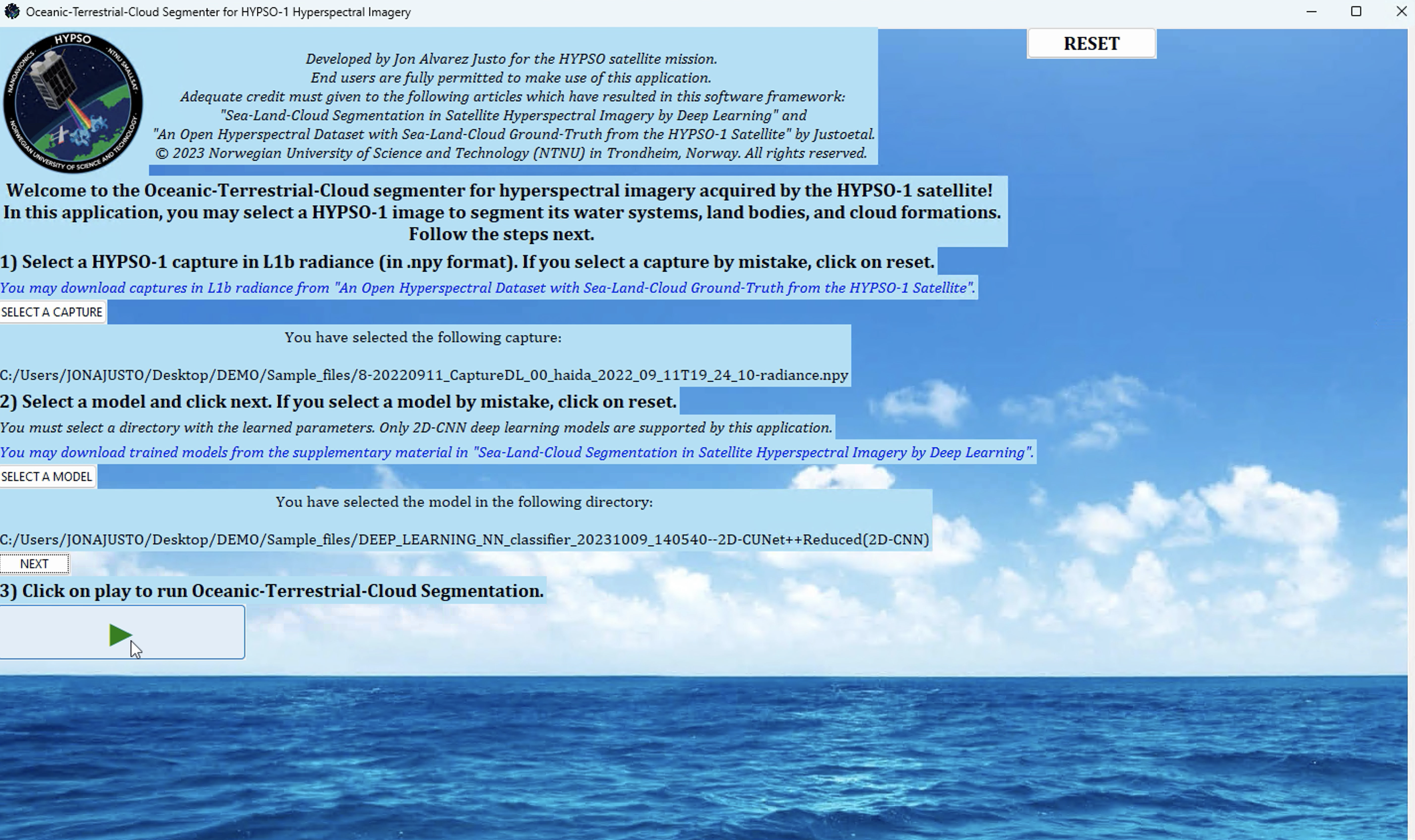Sea-Land-Cloud Segmentation in Satellite Hyperspectral Imagery by Deep Learning
Satellites are increasingly adopting on-board AI for enhanced autonomy through in-orbit inference. In this context, the use of deep learning (DL) techniques for segmentation in hyperspectral (HS) satellite imagery offers advantages for remote sensing applications, and therefore, we train 16 different models, whose codes are made available through our study, which we consider to be relevant for on-board multi-class segmentation of HS imagery, focusing on classifying oceanic (sea), terrestrial (land), and cloud formations. We employ the HYPSO-1 mission as an illustrative case for sea-land-cloud segmentation, and to demonstrate the utility of the segments, we introduce a novel sea-land-cloud ranking application scenario. We consider how to prioritize HS image downlink based on sea, land, and cloud coverage levels from the segmented images. We comparatively evaluate the models for future in-orbit deployment, considering performance, parameter count, and inference time. The models include both shallow and deep models, and after we propose four new DL models, we demonstrate that segmenting single spectral signatures (1D) outperforms 3D data processing comprising both spectral (1D) and spatial (2D) contexts. We conclude that our lightweight DL model, called 1D-Justo-LiuNet, consistently surpasses state-of-the-art models for sea-land-cloud segmentation, such as U-Net and its variations, in terms of performance (0.93 accuracy) and parameter count (4,563). However, the 1D models present longer inference time (15s) in the tested processing architecture, which seems to be a suboptimal architecture for this purpose. Finally, after demonstrating that in-orbit segmentation should occur post L1b radiance calibration rather than on raw data, we also show that reducing spectral channels down to 3 lowers models' parameter counts and inference time, at the cost of weaker segmentation performance.
PDF Abstract

